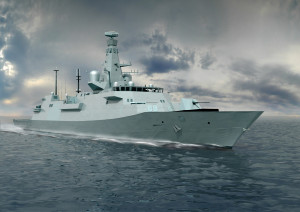Rolls-Royce Signs MTU Diesel Genset Supply Contract for UK Royal Navy
 Rolls-Royce is to supply twelve MTU diesel gensets to prime contractor BAE Systems for the first three Type 26 Global Combat Ships due to go into service with the Royal Navy.
Rolls-Royce is to supply twelve MTU diesel gensets to prime contractor BAE Systems for the first three Type 26 Global Combat Ships due to go into service with the Royal Navy.
The deal means that the core components of the frigate’s combined propulsion system will come from Rolls-Royce: four MTU diesel gensets with 20V 4000 M53B engines, each delivering 3,015 kW of mechanical power, and one Rolls-Royce MT30 gas turbine. The MTU brand is part of Rolls-Royce Power Systems. “The fact that we’re involved with our diesel gensets in this leading-edge project by the Royal Navy fills us with great pride and demonstrates the precision with which Rolls-Royce is able to meet customer requirements,” said Knut Müller, head of MTU’s governmental business.
The Type 26 Global Combat Ship is the first newly-designed Royal Navy surface vessel to be equipped with MTU engines. It is also the first time Rolls-Royce has supplied a naval vessel with an MTU propulsion system that meets the requirements of the IMO III emissions directive. To achieve this, each of the four engines on the vessel will be fitted with an exhaust aftertreatment system, which uses a Selective Catalytic Reduction (SCR) unit to neutralise nitrogen oxide emissions. Rolls-Royce has carried out extensive testing of this technology, which has already been successfully used in MTU off-highway applications, for use in maritime propulsion systems. The Type 26 Global Combat Ship is the Royal Navy’s third major project involving MTU engines.
Within the Combined Diesel-Electric or Gas Turbine (CODELOG) propulsion system for the Type 26 frigates, the MTU diesel gensets will provide electrical power for on-board electronics and for cruising propulsion. The Rolls-Royce gas turbine will be used for propulsion when travelling at high-speeds. The gensets are bedded on specialist mounts and surrounded by an acoustic enclosure, ensuring that the propulsion system operates at low noise levels.






